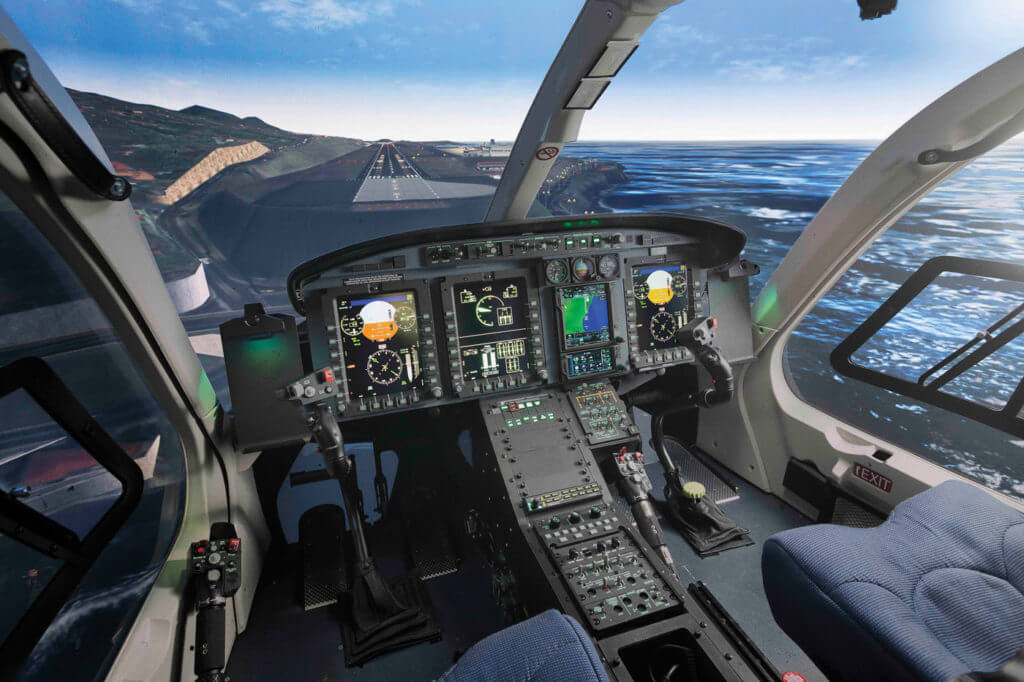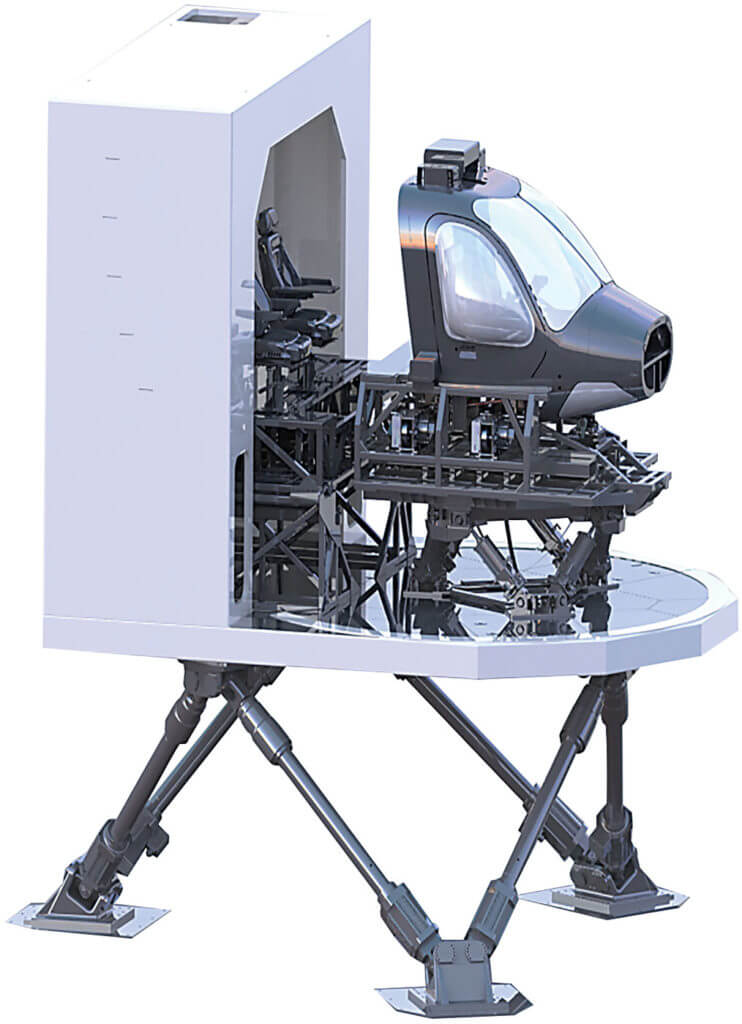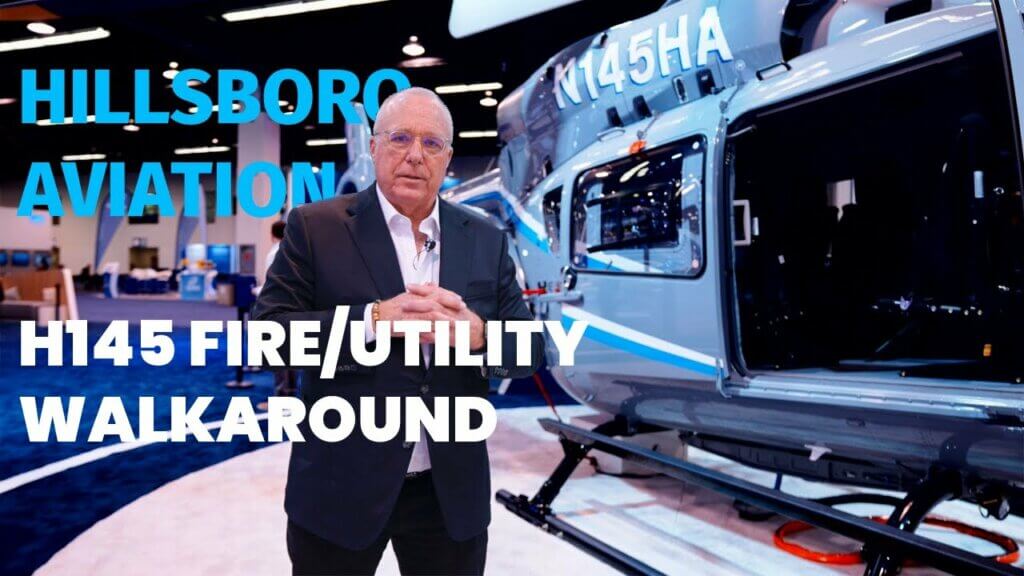When TRU Simulation + Training, a Textron company, set out to develop a Level D full-flight simulator (FFS) for the Bell 429 helicopter, its ambitions weren’t small. The goal was to create an immersive experience that replicates every aspect of flying the 429 with incredible realism, from picture-perfect visual renderings to flawless physical cues.
 “I think we really hit a home run with that,” said David Smith, vice-president of TRU’s business aviation division. “[Both] in the technology, and in driving the regulators to think differently about what could be accomplished in a full-flight simulator.”
“I think we really hit a home run with that,” said David Smith, vice-president of TRU’s business aviation division. “[Both] in the technology, and in driving the regulators to think differently about what could be accomplished in a full-flight simulator.”
TRU’s Bell 429 FFS is the first-ever certified by the European Aviation Safety Agency and is a remarkable example of the realism that can be achieved in a helicopter platform. It provides the industry’s largest standard visual field of view, the largest standard dome radius of any simulator on the market and industry-leading motion performance, with high-fidelity accelerations, smoothness and responsiveness.
“It exceeds requirements in ways that maybe other developers had chosen not to,” said Smith. “But we felt–particularly because of our close connection with the Bell Training Academy, and [because] the helicopter industry has yet to have the level of embrace with simulation that the fixed-wing community does–we felt this would help jumpstart that in the right direction.”
 TRU’s Bell 429 FFS is one of the most recent entries in the company’s outstanding product line. That product selection includes simulators and training solutions for Textron’s fixed-wing products, such as Cessna Citation business jets and Beechcraft King Air turboprops, as well as simulators for key civil aviation transport aircraft from major manufacturers like Boeing and Airbus. Among the other services TRU provides are maintenance training on several platforms and extensive military simulation and training services.
TRU’s Bell 429 FFS is one of the most recent entries in the company’s outstanding product line. That product selection includes simulators and training solutions for Textron’s fixed-wing products, such as Cessna Citation business jets and Beechcraft King Air turboprops, as well as simulators for key civil aviation transport aircraft from major manufacturers like Boeing and Airbus. Among the other services TRU provides are maintenance training on several platforms and extensive military simulation and training services.
However, the helicopter market will be a key focus as TRU moves forward, as the company sees simulation as the safest, most practical option for several dangerous and complex training scenarios.
Smith recalled a customer from his days at Bell who would swing large, expensive payloads into the islands off Alaska with a single-engine helicopter.
“How often does he get the training scenario to drop and cut the load, and do an autorotation because of an engine failure?” remarked Smith. “That scenario is not trained today. They think about it; they plan for it every time they’re flying . . . looking for–‘Where’s my landing spot?’ But the reality is they don’t, they don’t train for it, and so we can train for that in a simulator.”
 TRU full-flight simulators have expansive, jaw-dropping visuals that wrap fully around the pilot, ensuring that no matter where the pilot looks, they feel as if they are inside the flight scenario.
TRU full-flight simulators have expansive, jaw-dropping visuals that wrap fully around the pilot, ensuring that no matter where the pilot looks, they feel as if they are inside the flight scenario.
The Bell 429 FFS also has two separate motion systems that provide precise physical cues that add to the level of realism and immersion.
Its first motion system drives the simulator’s primary movements in a typical six-degrees-of-freedom setup, while the second system picks up on more precise movements, such as vibrations in the cabin and other effects of engine failure.
“We dial it in such a very precise way that it really has been just an exceptional level of realism,” said Smith. “So, we’re very excited about that platform, but we’re ready to push it to the next level.”
 With that in mind, TRU is doing research and development that will enhance simulation realism and immersion in several significant areas. They include more detailed visual and physical cues that would make crew training in hoisting and air medical loading simulations even more true-to-life. Other critical steps will be simulating what the passenger in a helicopter cockpit feels during flight and better replicating weather patterns.
With that in mind, TRU is doing research and development that will enhance simulation realism and immersion in several significant areas. They include more detailed visual and physical cues that would make crew training in hoisting and air medical loading simulations even more true-to-life. Other critical steps will be simulating what the passenger in a helicopter cockpit feels during flight and better replicating weather patterns.
“If you’re putting someone into a simulated environment and the thermal behavior in a valley or in a canyon . . . doesn’t behave the way it does in the real world–that takes them out of that simulation,” said Smith. “So, more exploration of the technical [aspects] of weather patterns, and in that sort of physics-based realism, is crucial.”
TRU consults with aircraft designers, pilots and operators when it develops its simulators, knowing an aircraft behaves differently in different settings.
“Engaging customers that fly the aircraft in those really unique, specialized environments–and then turning that into a scenario that brings that realism to another level, that’s crucial,” said Smith.
 TRU has developed a culture of constant innovation in flight training and simulation, with a focus on cultivating bold ideas. Aviation safety is at the core of its business today, and the company strives to represent its customers well in all avenues of training.
TRU has developed a culture of constant innovation in flight training and simulation, with a focus on cultivating bold ideas. Aviation safety is at the core of its business today, and the company strives to represent its customers well in all avenues of training.
As the industry gathers at Heli-Expo 2019, TRU Simulation + Training’s message is simple: Now is the time for simulation to become part of every helicopter operator’s flight training portfolio.
“We can support everything down to the lightest aircraft in a meaningful, realistic, high-fidelity training environment,” said Smith. “Now is the time to take your safety and mission readiness to another level.”









